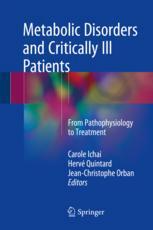

Most ebook files are in PDF format, so you can easily read them using various software such as Foxit Reader or directly on the Google Chrome browser.
Some ebook files are released by publishers in other formats such as .awz, .mobi, .epub, .fb2, etc. You may need to install specific software to read these formats on mobile/PC, such as Calibre.
Please read the tutorial at this link: https://ebookbell.com/faq
We offer FREE conversion to the popular formats you request; however, this may take some time. Therefore, right after payment, please email us, and we will try to provide the service as quickly as possible.
For some exceptional file formats or broken links (if any), please refrain from opening any disputes. Instead, email us first, and we will try to assist within a maximum of 6 hours.
EbookBell Team

4.0
16 reviewsThe purpose of this book is to bring together the latest findings on metabolic disorders that are strongly implicated in various critically ill patients. Since the beginning of the 20th century, maintaining the "milieu intérieur" has been a major challenge for intensivists. In addition to considerable technological developments in intensive care units, important advances in our understanding of metabolic disorders observed in critically ill patients have been made during the 10 last years. Today, the intensivit can’t ignore these disorders when selecting the most appropriate treatment for an illness. Cellular metabolic abnormalities are responsible for systems and organ failures, so the modern approach of organ dysfunctions now includes prevention or treatment of such disorders. This book is a comprehensive tool, allowing the physician to understand, diagnose and treat these metabolic disorders. Water, electrolyte, acid-base, glycemic and endocrinologic problems, as well as metabolic abnormalities observed in renal, cerebral and hepatic failure are presented in different chapters. The last part of the book is devoted to modern nutritional concepts, the consequences of energy modifications, mitochondrial dysfunction, hypothermia, oxidative stress and ischemia reperfusion, which open the way for new therapies.